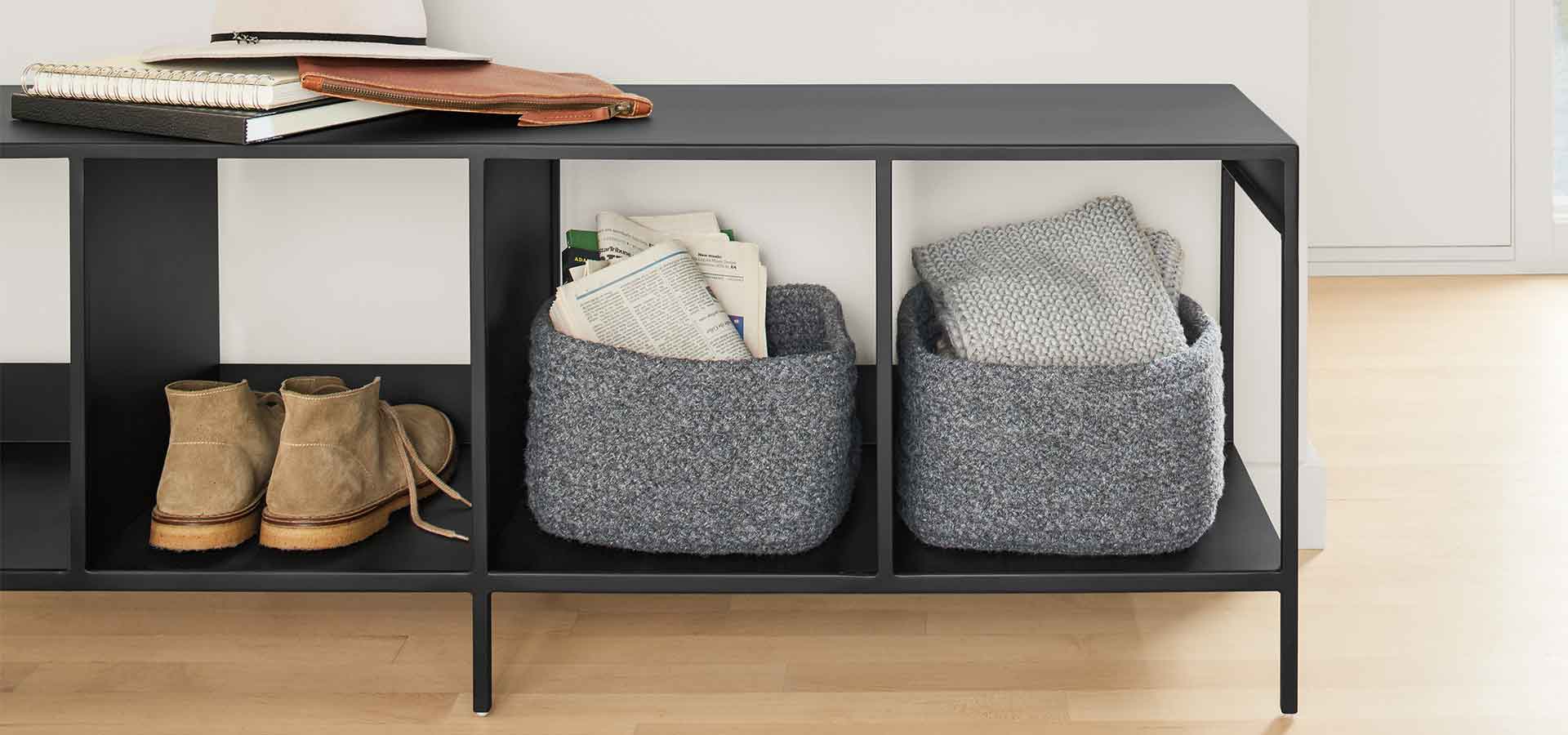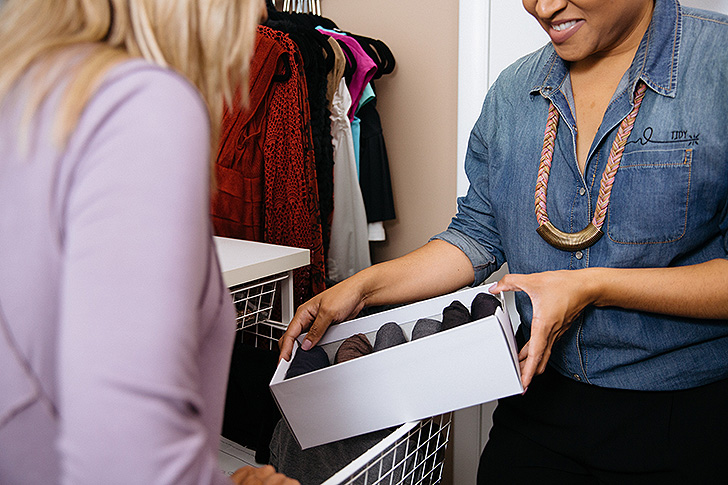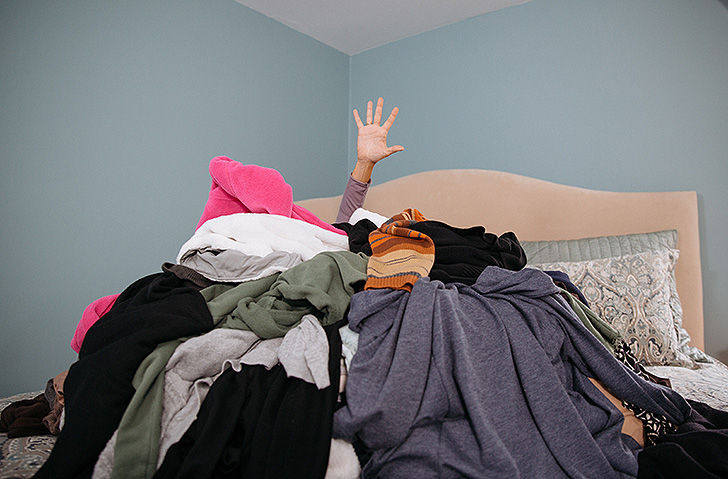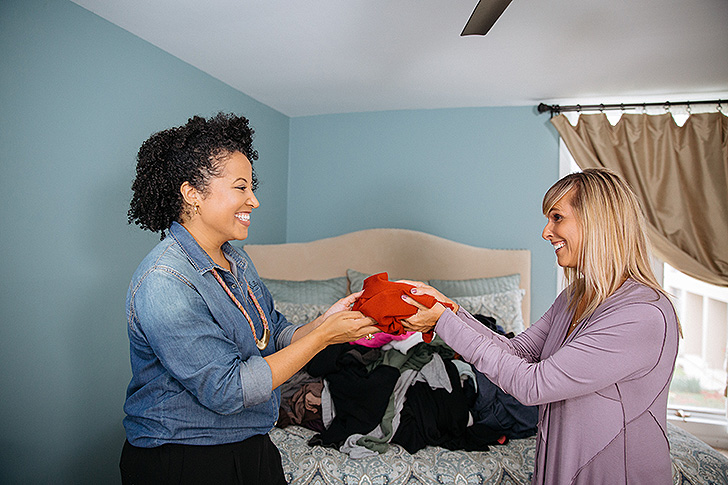Q&A with KonMari Consultant Kristyn Ivey

When Tidying Up with Marie Kondo hit our streaming devices last year, everyone seemed to experience a collective urge to get organized and purge anything that did not spark joy. To help give our customers insight into the KonMari Method™, we teamed up with Chicago’s first platinum-certified KonMari Consultant, Kristyn Ivey. In September, we hosted an event with Kristyn at our Chicago store and now we’re gearing up for our second interactive workshop at Room & Board Skokie on Saturday, Feb. 29. (Reserve your spot now!).
To get ready for the event, we chatted with Kristyn to learn a few tips and tricks for embracing the KonMari Method at home.

For those who might be unfamiliar with the the KonMari Method™, can you give a brief overview?
The KonMari Method is an unconventional Japanese-based organizing technique, which challenges you to surround yourself with only the things that spark joy. The method celebrates what you choose to keep, rather than focusing on what or how much you decide to discard, donate, or sell and encourages you to tidy your home and life through a lens of respect, gratitude, and joy.
When did you first learn about Marie Kondo and the KonMari Method? What sparked your interest in becoming a consultant?
Four years ago, I attracted the book “The Life-changing Magic of Tidying Up” into my life and immediately started my KonMari tidying journey. As I joy checked the first signature clutter category (clothing) I found $300 worth of brand new-with-tag clothes that didn’t spark joy. I connected my excessive, mindless shopping to the discontent I felt in major areas of my life, including my career. In that moment I realized just how much I valued service, doing something that I loved, and making an immediate impact in the lives of others. As I continued to declutter, I respectfully put seasons of my life to rest, including my degrees in engineering and interior design. A few months later, Marie Kondo launched her training program and soon after that I became certified KonMari Consultant #12 and launched For the Love of Tidy, Chicago’s first KonMari consultancy.

We love the idea of items in your home sparking joy. But what about things that are just functional and necessary? What are your tips for organizing items that don’t necessarily spark joy?
Marie Kondo is the supreme example of “spark joy,” setting the bar high so we elevate our overall decision making instead of settling for things that are just OK. But if you don’t get as excited about your socks as she does, the KonMari Method still applies. This shows up the most when joy checking utility items. The fact that these items are useful, accessible, functional, or necessary is the joy.
When your treasures reach the end of their useful life you discard, recycle, sell, or donate them with a “thank you” to celebrate the role they had in your life with gratitude. As you thank items that don’t make the cut, the loved items shine even brighter, ready for their new role and significance.
What are tips for tackling your home space by space? Where should you start so it doesn’t feel insurmountable?
Unique to the KonMari Method, you make decisions of joy by category, not space. For example, instead of making decisions about the three ink pens in your miscellaneous drawer, you bring all of the writing utensils that exist in your home together to evaluate comprehensively. This shifts your understanding and awareness of how a particular category of clutter is showing up in your space and supporting/not supporting your life. This leads to more abundant thinking (I have what I need) rather than a scarcity mindset (I don’t have enough/I need more).
If you feel overwhelmed, lean on the vision of your ideal life and home. Before jumping into the very large and sometimes daunting task of tidying up KonMari style it is critical to understand the “why” behind your efforts. Otherwise, it’s highly likely you will lose motivation, stutter-step through decisions or plateau. I wrote a tidying companion, The Tidy Home Joy Journal to address this often overlooked step in great detail because I noticed the power that purpose-driven decision making had on my client’s journey. We also address this critical step in Episode 5 of Spark Joy podcast, which I co-host.

Getting organized is one thing. Staying organized is another. What tips do you give clients to help them maintain a newly organized space?
The first and most important tip that has the greatest impact on maintenance is to actually finish your KonMari tidying event! Moving beyond mastering the KonMari signature folding technique to making decisions about every single item in your home across all five clutter categories (Clothing, Books, Paper, Miscellaneous items, and Sentimental).
After your journey comes to an end, you’re an extension of a home that you honor. Everything has a place and you’re more mindful about what you already have and how much you need or intend to buy. So even when things are out of place day-to-day, you don’t get overwhelmed because you know you can reset each room with ease and get back to focusing your time, energy, and resources on experiences rather than stuff.
This is also when I recommend shifting your attention to upgrading furniture, refining the design of the space to complement the joy of the items.
Do you have a rule for how much to tackle in a day? What should you do if your energy drops and you haven’t finished what you started?
It is important to first calculate and acknowledge the number of years clutter has been a challenge in your space or life. Even the smallest spaces with the lowest volumes of clutter take time to spark joy. Lasting change simply won’t happen overnight. Block 3-5 hours of tidying time per day, per clutter category to avoid decision fatigue. Lead with compassion and continuously refer back to the vision of your ideal lifestyle and living environment to ground your decision making in the reality of your home and life.

Do you have any tips for tidying up with kids?
Kids love KonMari because it’s tangible and has an immediate visual impact on a space. Make tidying fun and set boundaries to model more intangible concepts like gratitude and mindfulness. For example, create a “Thank You” box for your child’s room to hold items that have served their purpose and are ready for a new life. This encourages kids to be more conscious and take ownership of the things that they love and play with every day.
Photos by Kristyn Ivey



